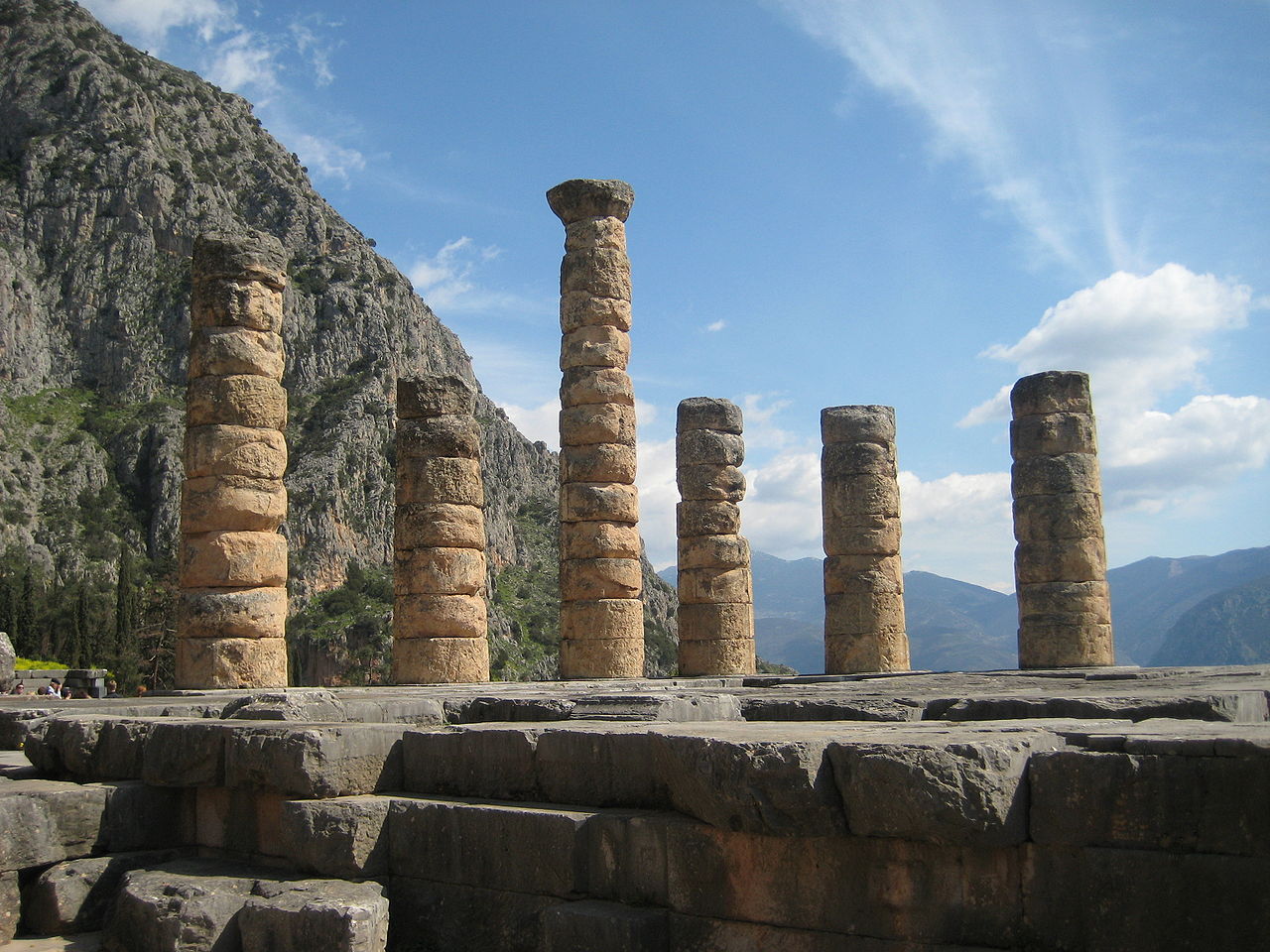In Cuma, a place near Naples, not very far from a volcanic lake, the Averno Lake, there is a fascinating cave. Visiting it is really astonishing. I went there some years ago, and once in the park where the cave was discovered, in 1932, I asked the guardians of the place to indicate me were the Cave of the Sibyl was. They stared at me and hilariously they said: “But lady, which Sibyl, she didn’t exist! She was just a legend”. Indeed they were wrong, since Sibyls were priestesses with a specific duty, that of leaving prophecies in particular occasions. The Cumaean Sibyl appears in ancient works from Virgil, Ovid and Petronious. There were sybil dislocated in different countries of the ancient world and the Cumaean Sibyl was famous among the Romans. But not very far, in Greece, there was one of the most famous prophetess: the Pythia, responsible for the Oracle of Delphi. Some geoscientists have studied the place where the temple of Delphi is located and have concluded that Delphi is directly above one of the main anthitetic active faults of the Gulf of Corinth Rift. The presence of an active fault directly below the temple of the oldest sanctuary suggests that the mythological oracular chasm might well have been an ancient tectonic surface rupture (Picardy 2000). Other scientists supports the hypothesis showing that the trance like state of the Pythia during her mantic session could have been produced by inhaling ethylene gas or a mixture of ethylene and ethan coming from a naturally occurring vent of geologically origin (Spiller et al. 2002)
Ruins of the Temple dedicated to Apollo in Delphi, Greece
Could the Cumaen Sibyl case be considered analogous? We don’t know if there are studies in this direction. Nevertheless mythology could be of great inspiration not only for geological investigation but also for Earth Education. Dorothy Vitaliano, in her milestone book on Geo-mythology hoped that this new discipline would help to bridging the gap between scientist and non-scientist by stimulating curiosity about the Earth (Vitaliano 1973). In recent years, some sessions of the International Geological Congress were devoted to this fascinating discipline. In 2007, following the 2004 session of Geo-mythology at the IGC in Florence, a book edited by L. Piccardi and B. Masse, collecting papers from all over the world was published by the Geological Society of London. I was in Florence in 2004 and had the pleasure to meet the already quoted Dorothy Vitaliano, the founder of the discipline, and to shake her hand. It was a really nice moment.
In the video Sybil Cave in Cuma near Naples (Italy)
References to academic articles:
PICCARDI, L. 2000. Active faulting at Delphi, Greece: Seismotectonic remarks and a hypothesis for the geologic environment of a myth. Geology, 28, 651 – 654.
SPILLER, H. A., HALE, J. R. & DE BOER, J. Z. 2002. The Delphi oracle: a multidisciplinary defense of the gaseous vent theory. Journal of Clinical Toxicology, 40, 189–196.
Books:
– Myth and Geology GSL 2007 see table of contents
– VITALIANO, D. B. 1973. Legends of the Earth. Their Geologic Origins. Indiana University Press, Bloomington.
a magazine article on Geomythology geomiti (in Italiano)

